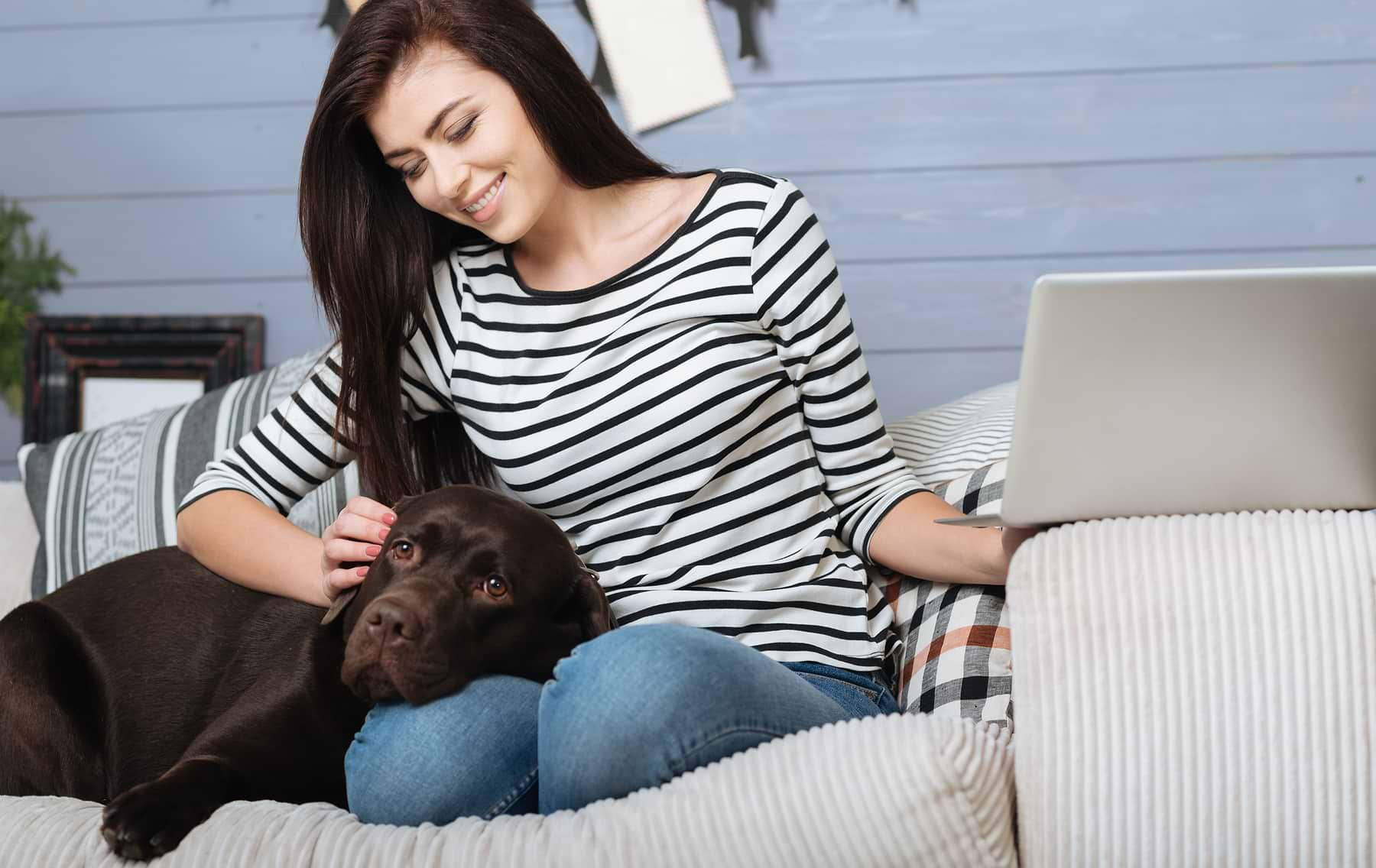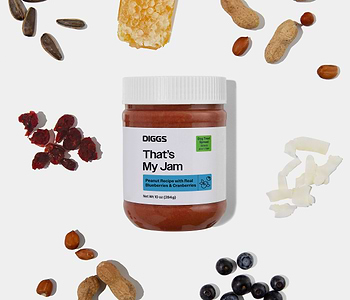Is it possible to crate train a puppy while working a full-time job? Absolutely! Crate training a puppy while at work is hard, though it’s not impossible. Whether you work from home or go into an office, here’s an in-depth guide on how to crate train your puppy.
Introduce Your Puppy to Their Crate
Start the process of crate training on a weekend when you are home from work and have more time on your hands. In fact, we suggest taking a beat on crate training until you are able to take some time off and be home for a few extra days.
Properly introducing your pup to their crate is a crucial first step in your journey to crate training and you’ll want to be sure that you’re allotting the necessary amount of time needed for this part.
Associate Positivity With the Crate
From the very start, you’ll want your puppy to associate only positivity with their crate. The placement of the crate will be a fundamental piece of this puzzle.
Put the crate in a section of your home where there’s a lot of action, like your living room. We don’t want your puppy to feel like they’re being punished, but instead part of the hustle and bustle of your household.
Crate training tools are an effective way to positively reinforce your puppy’s crate. They’re designed to encourage licking, which has a soothing effect on your pup’s mind. If your pet has any fears of crate time, a crate training tool will work to calm them down and reduce those anxieties.
Note: Remember that crate training tools are not meant to be left with your pet while unsupervised, so use these aids when you are home with them.
Be aware of the way you speak when your puppy is in their crate. You should try and maintain a happy tone of voice. Keep it cheerful but also soft, reassuring, and lighthearted.
Make It Comfortable
During introductions, make your puppy’s crate as comfortable as possible. Make sure to choose the right size crate for your little canine companion. If your pet’s crate is too small, they won’t be able to stretch out and properly relax. If your puppy’s crate is too large, they’ll have more room for destructive behavior and potty accidents. A properly sized crate should be big enough for them to stand up, turn around, and lie down in.
A puppy divider like the one included in the Revol Dog Crate is a great way to adjust your puppy's crate space as they grow. Also make sure to incorporate a crate pad and maybe even a plush blanket to really snug up the space.
Time and Patience
Introductions should be gradual. Let them get comfortable with this newfound attraction by allowing them to sniff, stare, and walk in and out. You can even toss a few treats inside without closing the door on them. These hidden rewards will come in handy later on when you’ve left the house.
Because food is associated with happiness and satisfaction, feeding your puppy a meal in their crate is another way to nail down the idea that the crate is a safe, comfortable space that’s meant for them to enjoy.
Never force your puppy to be inside their crate. Aggressive actions like physical force or using the crate as punishment will do nothing but scare them away from what’s supposed to be their safe haven.
Teach Your Puppy How To Be Alone
Once your puppy has warmed up to the idea of their crate, teach them to go on in and stay awhile. Start this process while you are home with your puppy.
Again, this should be gradual. We want to avoid trauma by taking this step extra slowly. The goal is to teach your puppy how to enjoy being alone, and we’ll do that by crate training in short intervals over a gradual period of time.
Guide them into their crate and close the door behind them. Give them a reward for staying quiet. Repeat the process a few times until they get the hang of stepping into their crate and having the door shut behind them.
After you feel like they are comfortable with this step, put them in their crate and walk out of the room. If they stay quiet, return immediately and reward with a treat or verbal praise.
Remember to listen to your tone of voice. Keep it light. You can also reward them with their favorite toy or chew. In the beginning, even one or two minutes might feel too long for your puppy, but over three or four days, you should be able to build up to fairly long periods.
Bear in mind that too much attention will have an adverse effect. Act relatively nonchalant when you reunite with your puppy. A treat and short verbal praise will suffice. No need for endless praise and excessive petting, and don’t let them jump up on you. Giving your puppy too much attention will teach them to associate leaving their crate with joy, instead of being in their crate with joy.
Plan Ahead
Now it’s time for you to go to work, which means you’ll have to leave your pet in their crate for more than a few minutes. Once your puppy gets a taste of how it feels to be alone, they’re ready to take their training to the next level. This might be scary and emotional for both the puppy and the pet parent but rest assured, you can do it!
All puppy bladders are different, so plan ahead by setting up a crate training schedule based on your puppy's specific needs. How long can your dog hold it? Are you able to step away from your desk and come back home to give your pup a break? Who’s going to relieve your pup while you're away? Feed them breakfast? Lunch? Dinner? Have they been provided enough constructive activity?
Have the answers to these questions long before you have to leave your puppy behind. A last-minute scramble is stressful for both parties involved. If your pup is able to stay in their crate for a portion of the day but a full workday is too long, consider hiring a dog walker to come and relieve your pet. While every canine is different, a typical puppy can only hold their bladder one hour for every month of age.
If your average workday is longer than normal, don’t be afraid to ask for help. You really shouldn’t leave your puppy alone for more than six hours. Hiring a pet sitter to come for a portion of the afternoon to give your pup some playtime while you’re at work is not a bad idea.
Make sure you are properly vetting anyone you allow to enter your home. Of course, we want to make sure that whoever is handling your pet has experience with managing little puppies and the challenges that come along with it!
Preventing Separation Anxiety
Separation anxiety is a common issue in puppies. It’s when your canine companion exhibits extreme stress from the time you leave your house to the time you come home.
When you get a new puppy, you’ll want to do everything you can to nip this anxiety in the bud. The goal is to give your puppy the confidence they need to endure their alone time while you’re at work.
Provide Your Puppy With Toys
Supply your little canine companion with the fun stuff when you leave the house. Safe-for-crate rubber chews and interactive puzzle toys are excellent ways to keep your dog engaged. It’s also a good way to redirect their focus from you leaving the house to something new and exciting. Consult your vet on what toys are safe for your puppy’s crate while you’re not there to supervise.
Use a Calming Aid
Calming supplements help with pet separation anxiety. They’re made to help your pup through anxious times by supporting stress levels, helping with fear and nervousness, and calming hyperactivity.
Make sure to choose a calming aid that’s made with healthy and whole ingredients like ginger root, melatonin, and chamomile. Consult a vet before giving your puppy anything over-the-counter.
Play Background Music
Background music is a good way to drown out any external sounds that could stress or startle your puppy when you’re not home. It will provide a calming atmosphere for your pet and relieve some of the stresses of you being gone.
If you don't want to or can't play background music, try white noise.
Monitor Your Puppy
We’ve already established that leaving your new puppy in a crate while you’re at work can feel worrying at first. Luckily, there are gadgets that can alleviate your pet parent separation anxiety by allowing you to monitor your pet right from your desk!
Pet cameras are a good way to watch your pet while you are at work and will help you feel more in control of the situation. You’ll be able to see if your puppy is adjusting to their crate nicely or if they’re partaking in destructive behavior, and some cameras even let you speak to your pet!
Working From Home
For those of you that work from home, it’s still possible to crate train your dog. It might just require a more structured routine. In fact, teaching your dog to spend time with themselves while you are in the house will make for a confident, independent companion that doesn’t rely on you as much. Having a dog that follows you around all day can become exhausting for everyone involed.
If you work from home, practice putting your pup in their crate for a couple of hours a day. Keep the crate in a separate room from the one you’re in. In addition, make sure that you are leaving the house a few times a day (even if it’s only for 30 minutes or so at a time) so your puppy can get used to you being gone.
Treat this scenario the same as you would if you worked in an office. Leave ample safe-for-crate treats for your pet, interactive toys, and chews, and make sure their crate is set up for success with a crate pad and a blanket.
The Benefits of Crate Training
There are a variety of benefits that come along with crate training your puppy, especially if you train them from a young age.
Housebreaking
Crate training helps with housebreaking your pet. Puppies typically don’t like to make a mess of the place where they sleep. Generally speaking, your puppy will hold their bladder for a longer period of time if they are crated.
Household Safety
Putting a puppy in their crate while you are out of the house is the best way to keep your puppy safe and prevent them from getting into trouble. If your puppy is in a crate while you’re gone, they can’t get into potted plants, your closet, outlets, the toilet, the sock drawer, your shoes, or anything else that could potentially hurt them or make a mess.
Knowing that your pet can’t partake in destructive or dangerous behavior when you’re out of the house gives pet parents peace of mind.
Travel Preparation
A crate-trained dog is more prepared for travel. Whether it’s a short car ride to the vet or a long-distance drive across the state, if your pup is used to their crate, it’ll make your trip much less difficult.
Crate training alleviates your pet’s travel anxiety by giving the dog a secure, familiar place to be while you’re on the go.
Socialization Skills
It might be hard to believe, but crate training your puppy can make them feel more secure and confident, which in turn improves their socialization skills with other dogs and humans.
Conclusion
We’ve covered a handful of ways on how you can crate train your puppy while at work. Although it may feel overwhelming at first, you and your puppy will get the hang of it.
Stay consistent and be patient with your new four-legged friend, and get yourself into the proper mindset before your puppy arrives home and do your best to plan ahead. We hope this guide makes for a stress-free crate training experience!
Crate training your puppy is one of the best ways to keep your puppy safe, calm and secure any time of day. Plus, dog crates are also one of the few ways to ensure your puppy is safely contained through the night, in the same way a crib keeps a human baby safe.
Inspired by the safety and quality standards of the baby product industry, we created our Revol Dog Crate to be the perfect blend of safety, durability, functionality, and aesthetic appeal for pets and pet parents alike.
Made with the modern pet parent in mind, the Revol Dog Crate:
- is ergonomically designed and easily collapsible with one hand for storage and transportation;
- is designed to feel open even when closed, thanks to the special diamond-shaped mesh pattern for the walls and roof;
- is built to last with durable yet lightweight materials that are so safe, they meet FDA safety standards for food use;
- is available in spacious sizes designed to the maximum size accommodations;
- comes with a puppy divider so your crate can grow with your fur baby;
- is safe and secure enough for even the most precocious pup;
- and has specially-designed accessories available to make your dog's crate truly feel like home.
Sources:
Crate Training a Puppy While At Work | PupBox
Separation Anxiety in Dogs | American Kennel Club
The Importance of Teaching Your Puppy How to Be Alone | American Kennel Club

The Diggs Team
We believe our dogs deserve safer, better designed pet products.
You might also like
Crate training tips, stories and inspiration
View all blogsIn Your Diggs
Share your photos with #DiggsPet and tag us @DiggsPet on IG and TikTok.





